

Measuring equipment for solar energy
Municipal Metering
For a batteryless system,what happens when you are generating more solar energy than you can use and converting it with a gridtie inverter meaning energy
is being returned to the municipal grid?
Traditionally municipal meters were of the magnetic disc type. With these meters if you generate more energy than you use, the meter is mechanical and it will run backwards effectively crediting you for the extra energy you returned, and will run forwards when you are not over generating, effectively working as an unlimited battery for free.
With Prepaid electricity systems and remote electricity meter monitoring, the municipal meter is
becoming an electronic device. In computing your power usage, it takes into account the magnitude of
the voltage and the magnitude of the current, and does not determine direction of flow meaning you are charged for electricity you send back to the grid as though you had consumed that energy.
In time laws will change and the municipality will be able to buy your surplus energy and pay you. This will need a different model of meter. Overseas when buying back electricity, you are usually only given 25%
of the cost of buying electricity, meaning you need to send back 4kwH for each 1kwH used for free in non-solar time.
Hence knowing what is going on with your system is advantageous.
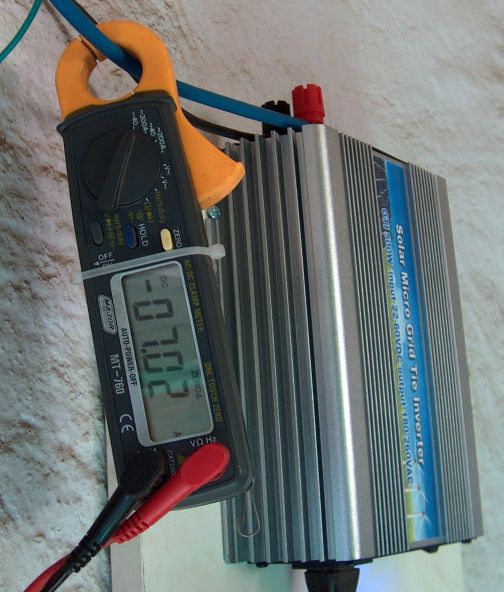
Above: A meter measuring the incoming current from the solar panels to one of the micro grid-tie inverters. You can measure the DC current coming from a panel using a DC current meter with a clamp. This has the advantage of not interupting the circuit to insert the measuring system. This is an optional instrument if you are interested in monitoring performance of individual panels and inverters.

Power meters monitoring the supply of energy.
Engage in the UK make a fantastic range of meters and software for monitoring solar systems both locally and in the cloud.
The meter on the left shows incoming power from the solar system to the building, while the middle one shows supplementary power from the municipal supply and the one on the left is showing power being used to heat a 250 litre geyser.
(Geyser meter was recorded at a different time to the other two meters and I wanted to show what a 4kW heater element uses).
Units are kilowatt hours and at mains voltage. We have since 2014 generated 33000kwH of electricity in our small system at (8-17)kwH/day for a full sun day and saved 33.0 tonnes of carbon release..
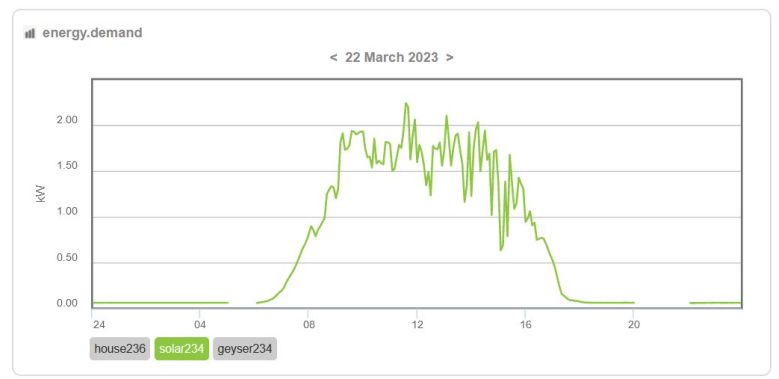
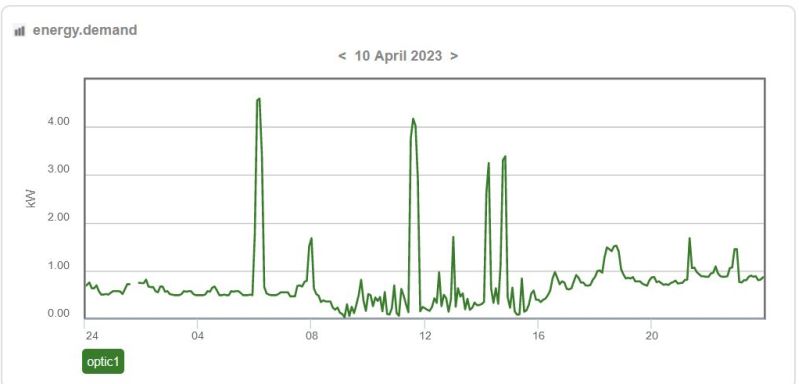
Daily view
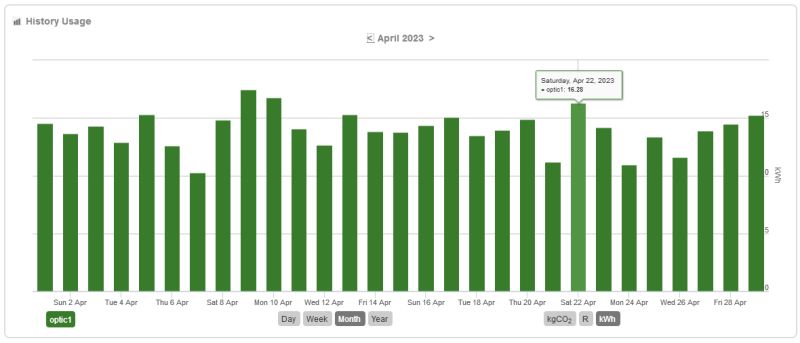
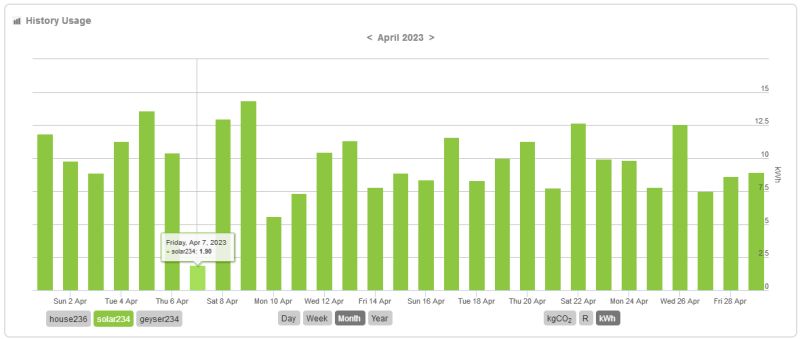
Low-cost power meters
A power meter is very useful to know what is going on with your solar system. There are many different forms of power meters one can use.This one is one we suggested in our page on cost effective solar systems where you are trying to generate electricity cheaper that can be bought from the municipality to minimise bills.
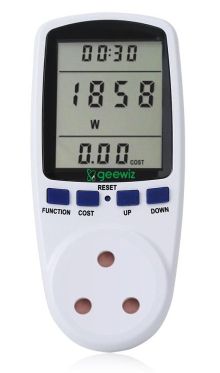
Low cost power meter for monitoring your solar system performance (optional)
Getting help and advice
This description is provided to show how easy it is to get going. I am not selling anything, just encouraging users to take the first step.
You can contact me for help and advice from Mike at info@rapidttp.co.za Tel +27 72 992 6040
1 May 2023
Also see an article on Low cost solar solution
Also see an article on Solar water heating - solar geysers
Also see an article on battery storage systems
Also see an article on Design of computer controlled solar system for smart home
Also see an article on Dealing with Load shedding at home
Also see an article on Gridtie inverters -Converting solar energy
Also see an article on Stand alone inverters -Converting battery energy
Also see an article on Energy equivalents